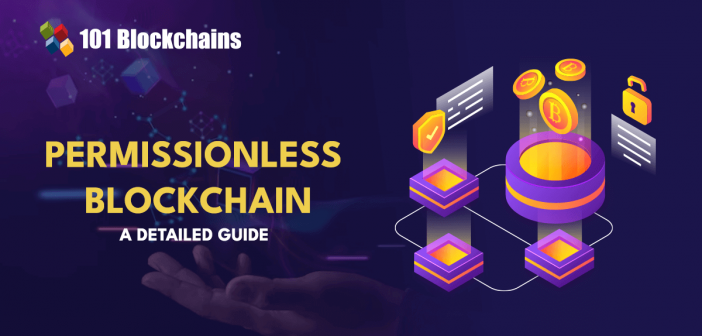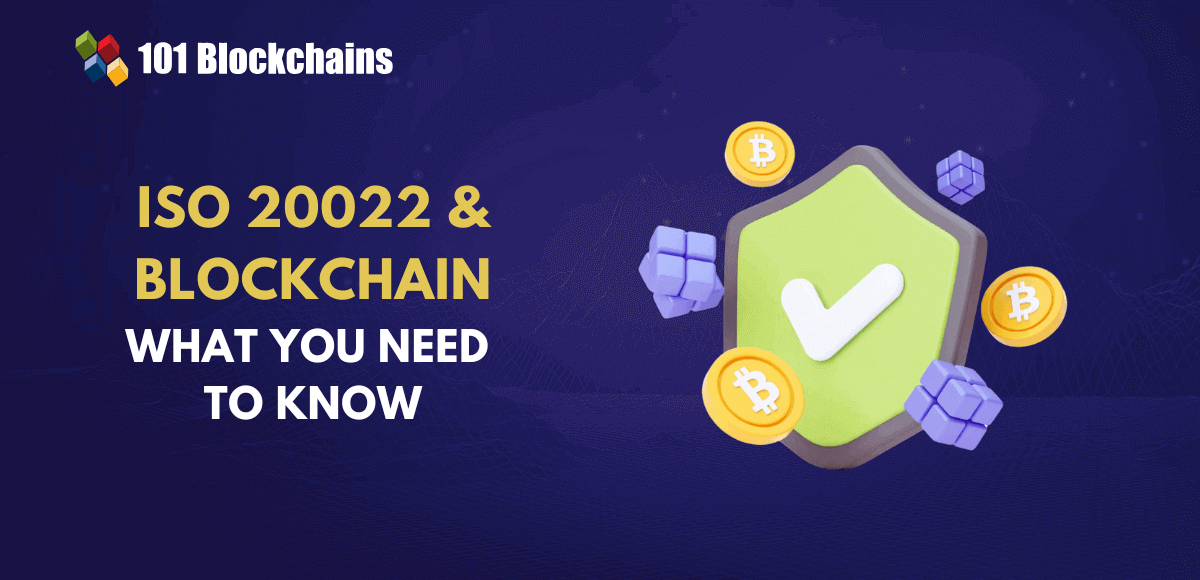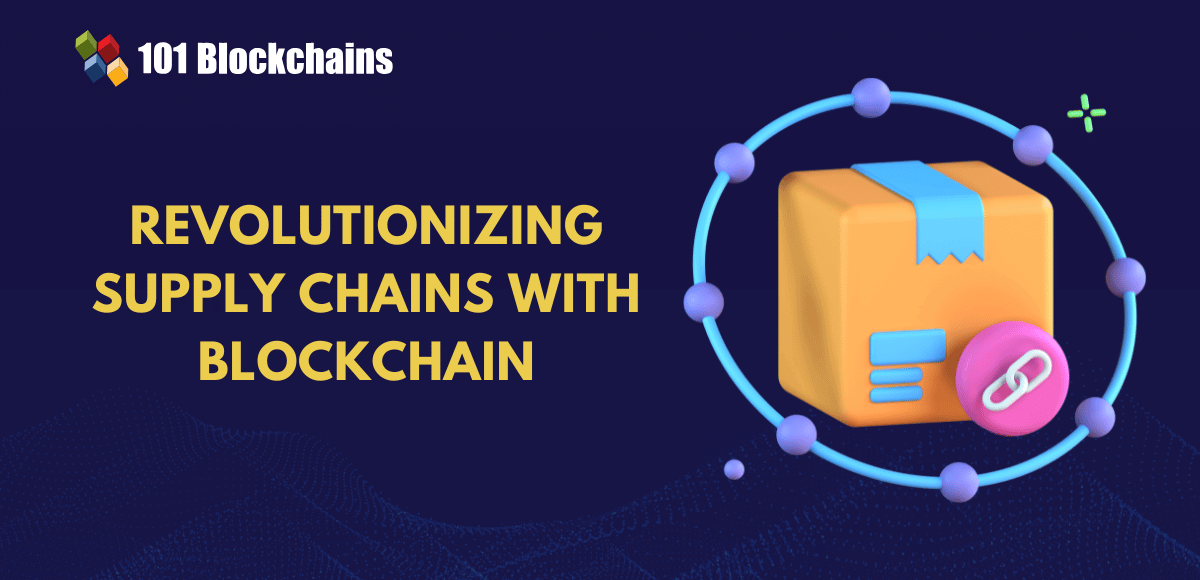Learn how blockchain truly works, master key definitions, and uncover what makes smart contracts so "smart." Dive into the fundamentals, gain valuable insights, and start your blockchain journey today!

- Blockchain
Georgia Weston
- on November 13, 2023
Permissionless Blockchain: A Definitive Guide
Web3 and blockchain have emerged as next-generation technologies with the potential to transform conventional systems and processes. For example, blockchain provides cryptocurrencies as a peer-to-peer electronic cash system. Over the course of time, blockchain has evolved as a promising tool for creating DeFi applications, NFTs, and different dApps. However, the introduction of new terms has created confusion for people, especially beginners in the field of blockchain. You can come across questions such as “What is permissionless blockchain?” in the process of learning about web3. What is the importance of permissionless blockchains in web3? Are there any examples of permissionless blockchains? What are the advantages of permissionless blockchains? Let us find the answers to these questions in the following definitive guide on permissionless blockchain.
Build your identity as a certified web3 & blockchain expert with 101 Blockchains’ Web3 & Blockchain Certifications designed to provide enhanced career prospects.
What is Permissionless Blockchain?
The first step towards learning about permissionless blockchains involves familiarizing yourself with the definition of the term. Any permissionless blockchain guide would draw attention towards the term permissionless. The term ‘permissionless’ clearly implies something that doesn’t require permissions. It means that you can join or use a blockchain network without obtaining approval, authorization, or permission.
On the other side of the spectrum, you can find permissioned blockchains, which are the complete opposite of permissionless blockchains. Permissioned blockchains have gatekeepers as the authority for deciding who can access and use the blockchain. Permissionless blockchains do not have any gatekeepers who would demand authorization to join or interact with the blockchain.
Any individual who wants to learn permissionless blockchain fundamentals must also know that permissionless blockchain is ideal for the operations and administration of digital currency. Permissionless blockchain can also help in generating a personal address and participating in the network. Users can participate in the network by sending transactions to other users or working as a validator for transactions.
You should also note that one of the earliest permissionless blockchain examples points to Bitcoin. It provided an open and permissionless network on which users could trade virtual currency with each other. Users can also participate in the Bitcoin network through involvement in the mining process. The mining process is a method for solving mathematical puzzles to find results for validating transactions.
Another important aspect in the answers to “What is permissionless blockchain?” would point to the fact that there are many other popular permissionless blockchains. For example, Ethereum is another notable entry among permissionless blockchains. Compared to Bitcoin, Ethereum utilizes the Proof of Stake consensus alongside introducing the concept of smart contract programmability.
Working Mechanism of Permissionless Blockchain
The next crucial highlight in a guide to permissionless blockchains would point at their working mechanisms. The foremost goal of permissionless blockchains revolves around offering an environment without any central authority or administrator. You can check any permissionless blockchain guide to uncover the distinct traits of permissionless blockchains. Users could access the complete blockchain and join the consensus mechanism. In addition, you could also check events independently before they are registered on the blockchain.
The working mechanisms of public permissionless blockchain also aim at achieving simplicity for achieving consensus. Every participant in the public network would have a stake in the events of the permissionless network. The availability of different types of digital assets, including NFTs and tokens, alongside the flexibility for participation, ensures efficiency in the working mechanisms of permissionless blockchains.
It is also important to note that permissionless blockchains work in a transparent manner. Permissionless blockchain can work by incorporating multiple participants to ensure that the permissionless blockchain is immune to corruption. Malicious agents must compromise over half of the permissionless blockchain, and it is difficult to achieve the same without anybody’s knowledge.
Start your blockchain journey Now with the Blockchains Fundamentals Free Course
Is There a Private Version of Permissionless Networks?
If you speak about a private permissionless blockchain, you are likely to come across some awestruck faces. The terms ‘private’ and ‘permissionless’ are contradictory. However, you can find an explanation for the term with the help of references to the difference between public permissionless and permissioned networks. Public permissioned networks such as EOS or Ripple ensure that the network maintainer has the power to appoint privileged parties.
The network maintainer could run a node with special privileges that are not accessible to other users. On the other hand, public permissionless blockchains such as Ethereum do not have an authoritative party. Any individual could spin a node and join the network for mining blocks or broadcasting transactions.
Interestingly, a public blockchain like Ethereum could also have certain restrictions. How? Assume that you have a smart contract featuring a function that allows specific privileges to the contract owners. You have a permissionless blockchain in Ethereum that does not have any centralized authority on the network level. On the other hand, the smart contract on the permissionless blockchain implements permissions.
Therefore, anyone could create a node on a permissionless blockchain to join a private permissionless network. You should note that the private permissioned blockchain would be acknowledged by other nodes in the network. However, other nodes would not share data with the private permissioned network. Smart contracts on such private networks define permissions for performing actions alongside the privileges for reading the smart contract and related data.
Learn about the fundamentals of blockchain technology, use cases, key elements and many more with Blockchain Fundamentals Presentation
What are the Characteristics of Permissionless Blockchains?
The journey of learning about permissionless blockchains would also focus on familiarizing with the traits of such networks. You can find multiple intriguing traits in a permissionless blockchain, such as the following,
-
Decentralization
The foremost trait of a permissionless blockchain is decentralization. Anyone who wants to learn permissionless blockchain functionalities should know that permissionless blockchains treat everyone as equal. Permissionless blockchains do not allow any specific agent to modify the protocols or edit the ledger.
It removes the complete dominance of a single authority on the blockchain network. As a result, permissionless blockchains such as Ethereum could provide a completely fair system for every user on the network. In addition, a decentralized environment provides better assurance for data security alongside improving data reconciliation.
The element of decentralization in a permissionless blockchain also ensures higher fault tolerance and optimizes the distribution of resources. On top of it, permissionless blockchain examples also remove security concerns due to a single point of failure. Decentralization also implies that the strength of the community would depend on the number of users. For instance, Ethereum has a massive community, which ensures that it has more validators, thereby improving the security of the network.
-
Transparency
Another distinctive trait of permissionless blockchains is transparency. Public blockchains allow users to access and view the same data on the blockchain network. The peer-to-peer network ensures easier traceability of data movement alongside transactions on the network. Every member maintains the exact copy of similar data in the distributed ledger of permissionless blockchains. Therefore, any unwanted modification in the ledger would immediately attract the attention of other members who would reject the modification.
-
Immutability
The next important highlight in answers to “What is permissionless blockchain?” would point to immutability. Permissionless blockchain networks can offer high security to users through decentralization alongside ensuring the immutability of data through the hashing function.
Hashing represents the process of encryption that allocates a unique hash value for the original data. The hashing process converts data of any size into a fixed value, which must collate with the value of the original text. Any type of interference in the original text would result in complete modification of the hash value.
Hashing provides an obvious advantage over cryptography as it provides an incomprehensible unidirectional encryption approach. Therefore, it is extremely difficult to transform a hash value into the original data. With such characteristics, data registered on a blockchain is completely immutable and cannot be modified without the knowledge of other network participants. Such types of restrictions on data accessibility and modifications could facilitate the effective management of privacy problems.
-
Anonymity
The outline of important traits of permissionless blockchain networks also emphasizes anonymity. Permissionless blockchains do not seek identification or personal information from users to create an address on the network. Therefore, users on permissionless blockchains could safeguard their anonymity and privacy.
-
Tokenization
Tokenization is also an important trait shown in a permissionless blockchain guide for beginners. Permissionless blockchains support the use of digital assets known as tokens for different purposes. The facility of tokenization on permissionless blockchain networks helps in serving incentives for users participating in the network. It is important to note that the value of tokens or digital assets could increase or decrease over the course of time, according to market conditions.
Want to understand the fundamentals of tokenization and its practical implications? Enroll now in Tokenization Fundamentals Course
What are the Benefits of Permissionless Blockchains?
Permissionless blockchains offer multiple advantages to users, including decentralization, transparency, and improved security. The high level of transparency could ensure faster transaction reconciliation among unknown individuals. Decentralization also presents unique advantages in permissionless blockchain examples, such as freedom from storing information in a central repository.
As a result, it can ensure the security of public records while ensuring accessibility for all users. The global accessibility of permissionless blockchains ensures better security and resistance to censorship. Without a single repository as the source of attack, malicious agents should attack 51% of the network to override consensus mechanisms.
Permissionless blockchains also develop credibility and trust with all the entities interacting with them. The networks have multiple users, thereby ensuring freedom from centralized intervention. In addition, smart contracts deployed with private permissionless blockchains could introduce an additional level of security. The biggest highlight among the strengths of permissionless blockchains is the freedom from additional processes for interaction with intermediaries or transaction validation.
Start learning Blockchain with World’s first Blockchain Skill Paths with quality resources tailored by industry experts Now!
Do Permissionless Networks Have Disadvantages?
Yes, permissionless networks also have disadvantages. It is important to note that the majority of the issues with a public permissionless blockchain are associated with performance. The foremost challenge for a permissionless blockchain points to the amount of resources required for running the network.
Permissionless blockchains require massive amounts of computing power and energy to achieve consensus. Another important setback for permissionless networks is their size. As compared to permissioned networks, permissionless blockchain is larger in size and could be slower. On top of it, the large size of permissionless blockchains creates problems for scalability.
The size of permissionless blockchains and the requirement of massive amounts of computing power and energy create problems for their adoption as permissionless networks. It is also important to remember that the public nature of permissionless networks creates setbacks for the privacy of transaction information.
Subsequently, another advantage of permissionless blockchain networks could turn back as one of their limitations. Anonymity is considered a promising advantage of permissionless blockchains that can safeguard your privacy. However, anonymity leads to a downside as permissionless networks don’t have any specific mechanism for filtering fraudsters or malicious agents from the networks. Therefore, it is practically impossible to find out the identity of fraudsters or malicious actors on permissionless blockchains, thereby leading to security issues.
Aspiring to make a lucrative career as a blockchain developer but not sure how? Check the detailed guide Now on How To Become Blockchain Developer?
Difference between Permissioned and Permissionless Blockchains
Your efforts to learn permissionless blockchain concepts must also guide you towards the description of their differences with permissioned blockchains. The debate between permissioned and permissionless blockchains is one of the fundamental discourses in the world of web3. You can differentiate permissioned and permissionless blockchains on the basis of their specific applications. For example, permissionless blockchains are ideal for financial applications or use cases that require more decentralization. Permissionless blockchains can work wonders for blockchain storage, digital asset trading, and crowdfunding.
On the other hand, permissioned blockchains are useful for applications that need higher security and anonymity. For example, permissioned blockchains are ideal for use cases of supply chain management, claims settlement, and identity verification.
Start learning Blockchain with the World’s first Blockchain Career Paths with quality resources tailored by industry experts Now!
Bottom Line
The primary goal of permissionless blockchains revolves around financial applications and empowering the principles of decentralization. You can use the answers for “What is permissionless blockchain?” to understand how they could boost the web3 landscape. At the same time, you should also learn about the limitations of permissionless blockchains.
For example, the requirement for more resources for powering permissionless blockchain networks is a major setback. On top of it, anonymity of users on a permissionless network takes away the possibility of tracking malicious actors. On the other hand, it is also important to focus on the benefits of permissionless blockchains and understand their work. Find more details about permissionless blockchains guide and examples now.
*Disclaimer: The article should not be taken as, and is not intended to provide any investment advice. Claims made in this article do not constitute investment advice and should not be taken as such. 101 Blockchains shall not be responsible for any loss sustained by any person who relies on this article. Do your own research!







